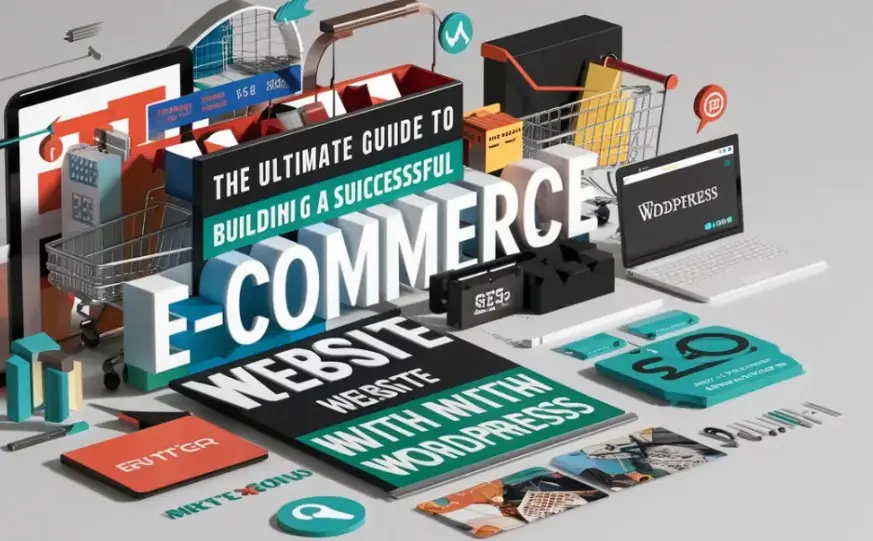Creating a successful e-commerce website requires more than just listing products online. To generate consistent sales, your website needs to be optimized for conversions, offering a seamless user experience, trust-building elements, and efficient pricing strategies.
One of the key aspects of driving conversions is competitive pricing. Whether you’re selling on Amazon or running an independent store, strategic pricing plays a crucial role in boosting conversions.
Choose the Right E-Commerce Platform
The foundation of a high-converting e-commerce website starts with the right platform. Some of the most popular options include:
- Shopify – A user-friendly platform with built-in payment processing and customizable themes.
- WooCommerce – A free WordPress plugin that provides full control over your store’s design and functionality.
- BigCommerce – Ideal for larger businesses needing scalability and built-in marketing tools.
- Magento – A highly customizable but complex platform suited for large enterprises.
Selecting the right platform depends on your budget, technical skills, and scalability needs.
Create High-Quality Product Pages
Your product pages should provide enough information to persuade potential customers to buy. Include:
- Clear and high-resolution images from multiple angles.
- Engaging product descriptions that highlight key features and benefits.
- Customer reviews and ratings to build trust.
- Price comparisons or discounts to create urgency.
For sellers on Amazon, using an Amazon repricer can help adjust prices in real-time, ensuring your product remains competitive without requiring manual updates.
Optimize Website Speed and Performance
A slow-loading website can lead to high bounce rates and lost sales. To improve speed and performance:
- Use a fast and reliable hosting provider.
- Optimize images to reduce file sizes without compromising quality.
- Enable browser caching and use a Content Delivery Network (CDN).
- Minimize the use of heavy scripts and unnecessary plugins.
Faster websites provide a smoother shopping experience, increasing the likelihood of conversions.
Implement a Mobile-Friendly Design
With a majority of online shoppers browsing from mobile devices, your website must be fully responsive. Ensure:
- Navigation is simple and intuitive on smaller screens.
- Buttons and links are easy to click without zooming.
- Checkout forms are streamlined for mobile users.
- Page layouts adapt smoothly to different screen sizes.
A mobile-optimized website can significantly increase sales, as customers find it easier to browse and purchase.
Streamline the Checkout Process
A complicated checkout process is one of the biggest reasons for abandoned carts. To optimize your checkout:
- Offer guest checkout to minimize friction.
- Provide multiple payment options, including credit cards, PayPal, and digital wallets.
- Use auto-fill features for shipping and billing information.
- Clearly display shipping costs and estimated delivery times before checkout.
Reducing unnecessary steps in the checkout process can help convert more visitors into paying customers.
Use Strong Calls-to-Action (CTAs)
Effective CTAs guide visitors toward making a purchase. To create compelling CTAs A/B Testing:
- Use action-oriented language like “Buy Now” or “Get Yours Today.”
- Make buttons stand out with contrasting colors.
- Place CTAs strategically on product pages, landing pages, and throughout the checkout process.
A well-placed and persuasive CTA can significantly increase your conversion rates.
Leverage Trust Signals and Social Proof
Customers need to feel confident in your store before making a purchase. Build trust by:
- Displaying secure payment icons and SSL certificates.
- Featuring customer reviews and testimonials.
- Offering a clear return and refund policy.
- Showcasing logos of well-known payment providers or industry partners.
Trust signals reduce hesitation and encourage customers to complete their purchases.
Utilize Smart Pricing Strategies
Pricing plays a significant role in conversion rates. Some effective strategies include:
- Dynamic Pricing – Adjusting prices based on demand and competitor activity.
- Bundling – Offering multiple products together at a discounted rate.
- Psychological Pricing – Using strategies like ending prices in “.99” to make them seem lower.
For sellers on Amazon, an Amazon repricer automates price adjustments, ensuring competitiveness without constant manual updates. This allows businesses to maximize profits while staying attractive to buyers.
Implement Retargeting and Email Marketing
Not every visitor will make a purchase on their first visit. Retargeting and email marketing help bring them back:
- Use retargeting ads to remind visitors of products they viewed.
- Send abandoned cart emails with personalized discounts or free shipping offers.
- Create an email newsletter to keep customers engaged with promotions and new arrivals.
Consistent follow-ups can convert hesitant shoppers into loyal customers.
Analyze and Improve Performance
Tracking your website’s performance is crucial for ongoing optimization. Use tools like:
- Google Analytics – To monitor visitor behavior, traffic sources, and conversion rates.
- Heatmaps – To see where users click and how they interact with your site.
- A/B Testing – To experiment with different designs, CTAs, and pricing strategies.
Regular analysis allows you to identify weak spots and continuously improve your site’s conversion rate.
Building a high-converting e-commerce website involves optimizing every aspect of the shopping experience—from website speed and mobile responsiveness to pricing strategies and checkout processes. Leveraging an Amazon repricer can also give sellers a competitive edge by ensuring real-time price adjustments.
By focusing on these elements, you can create an e-commerce website that not only attracts visitors but converts them into loyal customers, leading to sustainable growth and increased revenue.
Also Read- Monthly vs. One-Time Donations: Which Makes the Biggest Difference?







